At the era of Cloud solutions and worldwide shared resources, some big companies are stuck with a strict prohibition of any Cloud service. Self-hosting is a solution for those companies that want to build modern well-designed interfaces. How to do so if you are stuck outside the overall Cloud system?
Here are some solutions for designers who feel blocked by the complexity of security whitelists. But first, some definitions to be sure we are talking of the same thing.
- Self-hosted: said for solutions that are downloadable and installable on secured in-house servers. The idea behind the self-hosting is the total autonomy and management of the data within the company. Nothing goes outside.
- SAAS: meaning Software As A Service, is a method of software delivery and licensing in which software is accessed online via a subscription, rather than bought and installed on individual computers.
- API: an Application Programming Interface (API) is a computing interface to a software component or a system, that defines how other components or systems can use it. It defines the kinds of calls or requests that can be made, how to make them, the data formats that should be used, the conventions to follow, etc.
In other word, it can help developers connecting to a platform to automate some tasks or hook their program to it. - SSO: Single sign-on is an authentication scheme that allows a user to log in with a single ID and password to any of several related, yet independent, software systems. It is often accomplished by using the Lightweight Directory Access Protocol and stored LDAP databases on servers.
Presentator.io – Prototype tool like Invision
Presentator.io is a tool that can be self-hosted on your own servers. If you are familiar with InVision this tool brings you the same level of feature, at least the one I was using before using Figma:
- High Fidelity prototyping (sticky header/footer, interaction, animation/transition, screens overlay)
- Collaborative comments on the prototype
- Shared library of assets,
- Multiple project
- Shareable links
For the people who are not familiar with Invision or similar prototyping tool, this tool allows your to create hight fidelity interactive prototypes based on what you designed with your design tool. It seems to integrated to Adobe XD and Figma thanks to compatible plugins.
You can easily push new screens to Presentator to create commentable, interactive and always up-to-date prototypes.
When your prototype is ready, you can share it by creating different type of links depending on the rights you want to give to people.
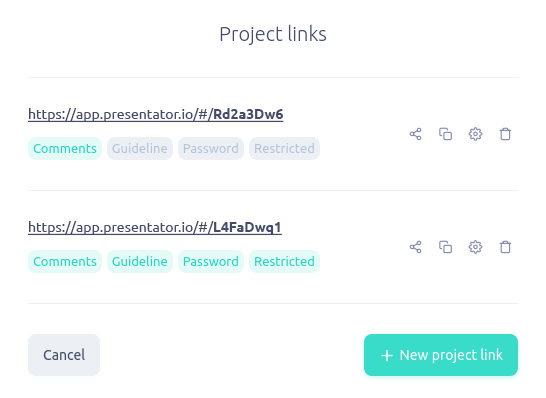
The tool also comes with a great API which allows you to almost do whatever you want in term of object manipulation. Take a look at the extensive documentation.
Sketch Measure – The specs of your design
Sketch Measure is a tool that helps you create specifications and inspect the details of your composition by showing to developers styles they can easily translate to code.
The interface looks like a design tool where technical information is put in highligh in the right sidebar.
Color, opacity, sizing and other informations like spacing between items are quickly available within the Sketch Measure interface. Slicing is also an option even if, as a designer and front-end developer, I don’t really understend that need.
I let you discover the rest of the tool.
UserTrack – Self-hosted session recording
If you heard about Hotjar and Fullstory for qualitative analysis, UserTrack try to cover some of those well known features like:
- Heatmaps (click and mouse mouvements)
- Full session video recording
- Basic pageview and visitor graphs
- Realtime visitors
- Muli-Domain Tracking
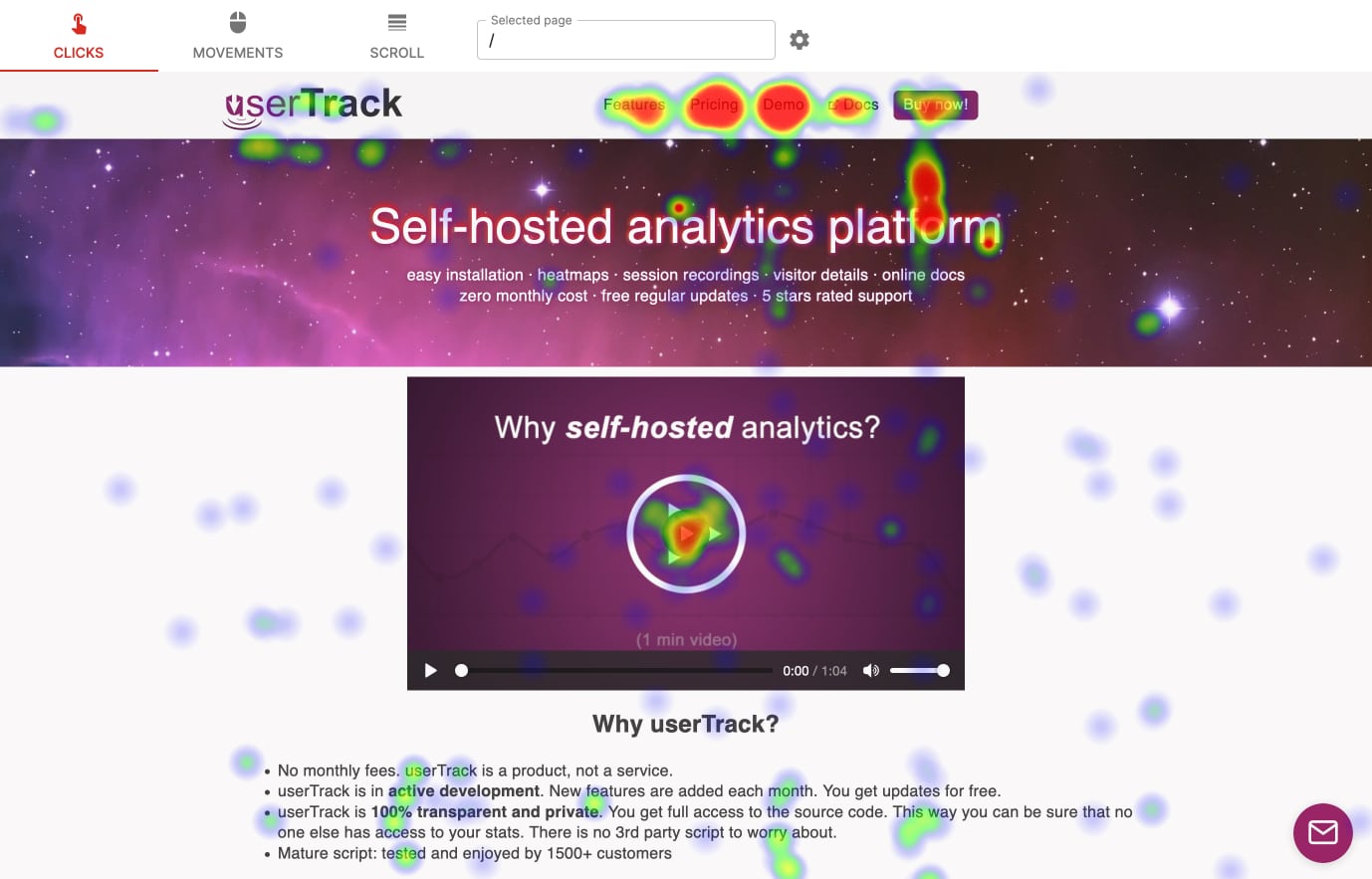
Good thing with UserTrack is they promise not to take to much of your Database resources: approximatively 1 Mb for 100 recordings. They also propose asynchronous script that won’t slow down your website.

The tool is not free, but it’s a lifetime payment of $99, which is really cheap for this kind of tool. It includes 6 months of support, free updates, and support for installation. For any other need, the documentation is pretty clear available online.
UX Lens – Self hosted video session recording
If you heard about Hotjar and Fullstory, yes, them again, UX Lens covers one simple feature which is Video Session recording from your visitors.
Good thing about doing only one thing is that you know what to do with the tool and won’t need to ignore 80% of the features you will never use.
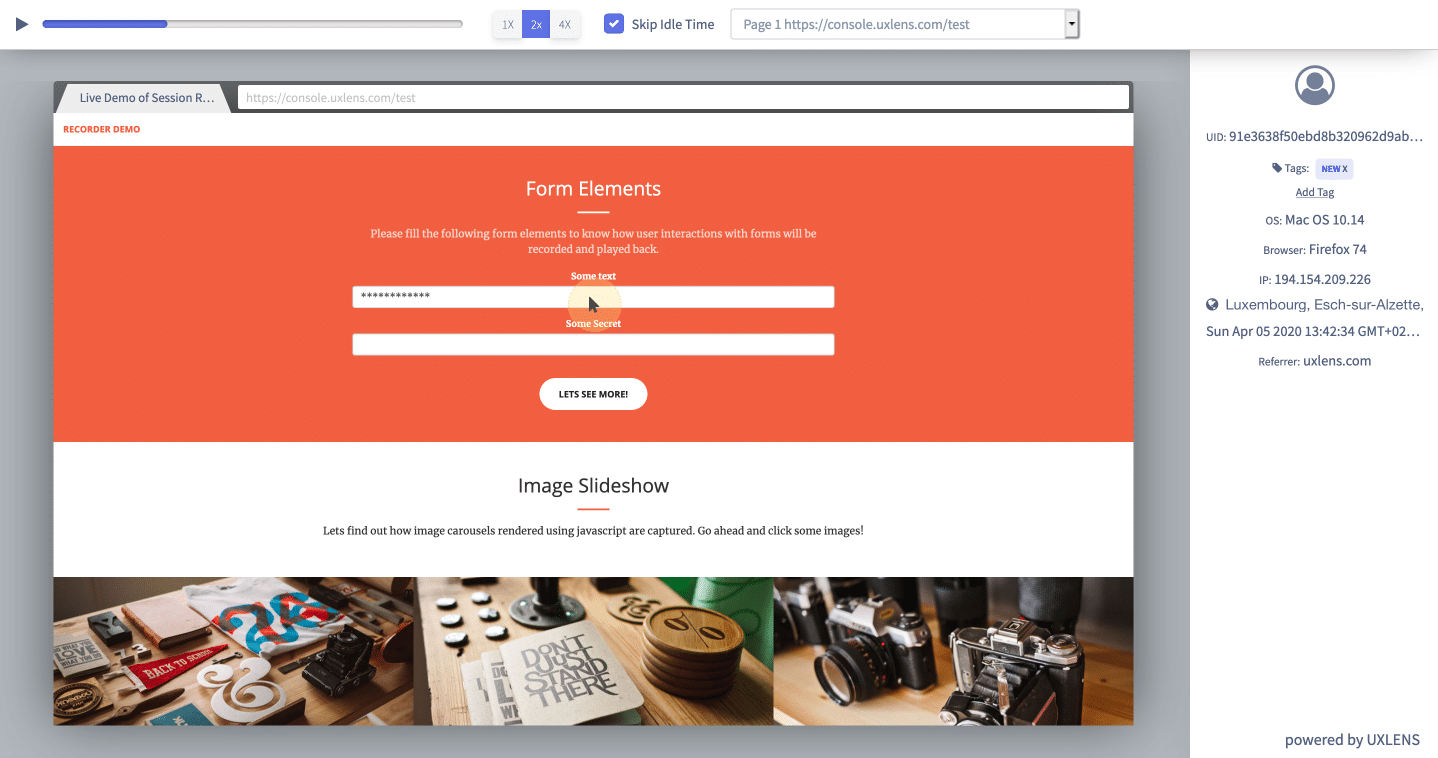
This tool is not self-hosted by default, meaning there is also a pricing (5$/month) and a service behind it. But in case you are really here for self-hosted solution, here is the documentation about it.
Github Enterprise
I already heard funny things on the “Git versus SVN” topic. Some companies keep using SVN because it’s self hosted and secured. The issue comes from the confusion between Github and Git. I won’t go through that, I’ll let you read the linked article. But know that git is something already installed on you computer (when you are on Mac) and has nothing to do with Github.
However, even Github can be self-hosted thanks to the Enterprise edition. Github entreprise offers almost all the Github.com features, minus the powerful Github Actions, but it should arrive soon, let’s hope.
Here is a list of available features coming from the Enterprise Edition:
- SAML single sign-on
- Access provisioning
- Invoice billing
- Self-hosted or cloud-hosted option
- FedRAMP and SOC 2 compliance
- Dependency insights
- Priority support
- Access to Actions and Packages
- Simplified account administration
- 99.95% uptime SLA (for the Cloud Enterprise version)
Gitlab – Self-hosted Git Versionning Control Tool
Gitlab is a Github Competitor proposing cloud and self-hosted solution for Git Versionning Control.
I won’t go into a comparision between the tools, because it’s not the topic here. But you’ll be able to realize what you usually do with Github also with Gitlab.
For the pricing, you can start with a 0$ fees thanks to the self-hosted version, and enjoy the updates of the software.
Matomo – Google Analytics and Tag Management
I discovered Matomo when its name was Piwic, some years ago, and I even already used it on this blog, but I don’t use it anymore for personal reasons. However, the tool is really advanced and allows you to cover almost everything you can do with Google Analytics.
Matomo can comes with Tag Management tool. The Tag Manager is package as a Plugin.
If you already use Google Analytics and want to change, you can import analytics data to Matomo.
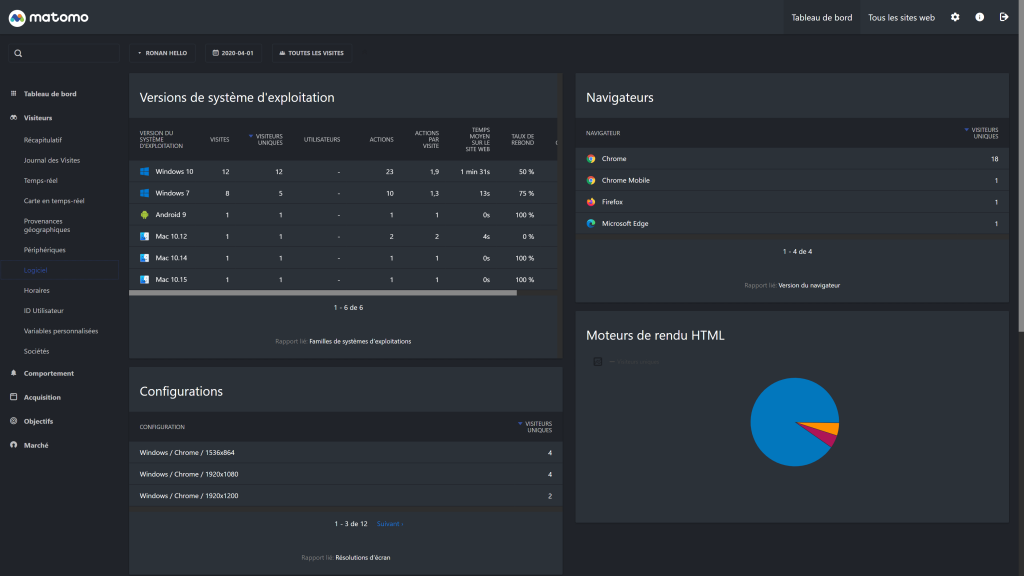
Matomo, as a self-hosted solution, brings you a bit more of fun since it allows theming. You can find a lot of themes, dark ones, colored ones, etc.
Jira & Confluence – Project management
Jira and confluence are both installable on your own servers.
I put the two tools in the same basket because I almost never used one without the other on the companies I worked with.
Jira Software and Confluence can be hosted and used securely on your system or servers to enjoy collaborative work within the entire company.
The only thing you’ll need to think about is to regularly update the packages to keep your softwares up-to-date in order to be able to use all the latest features developed by Atlassian.
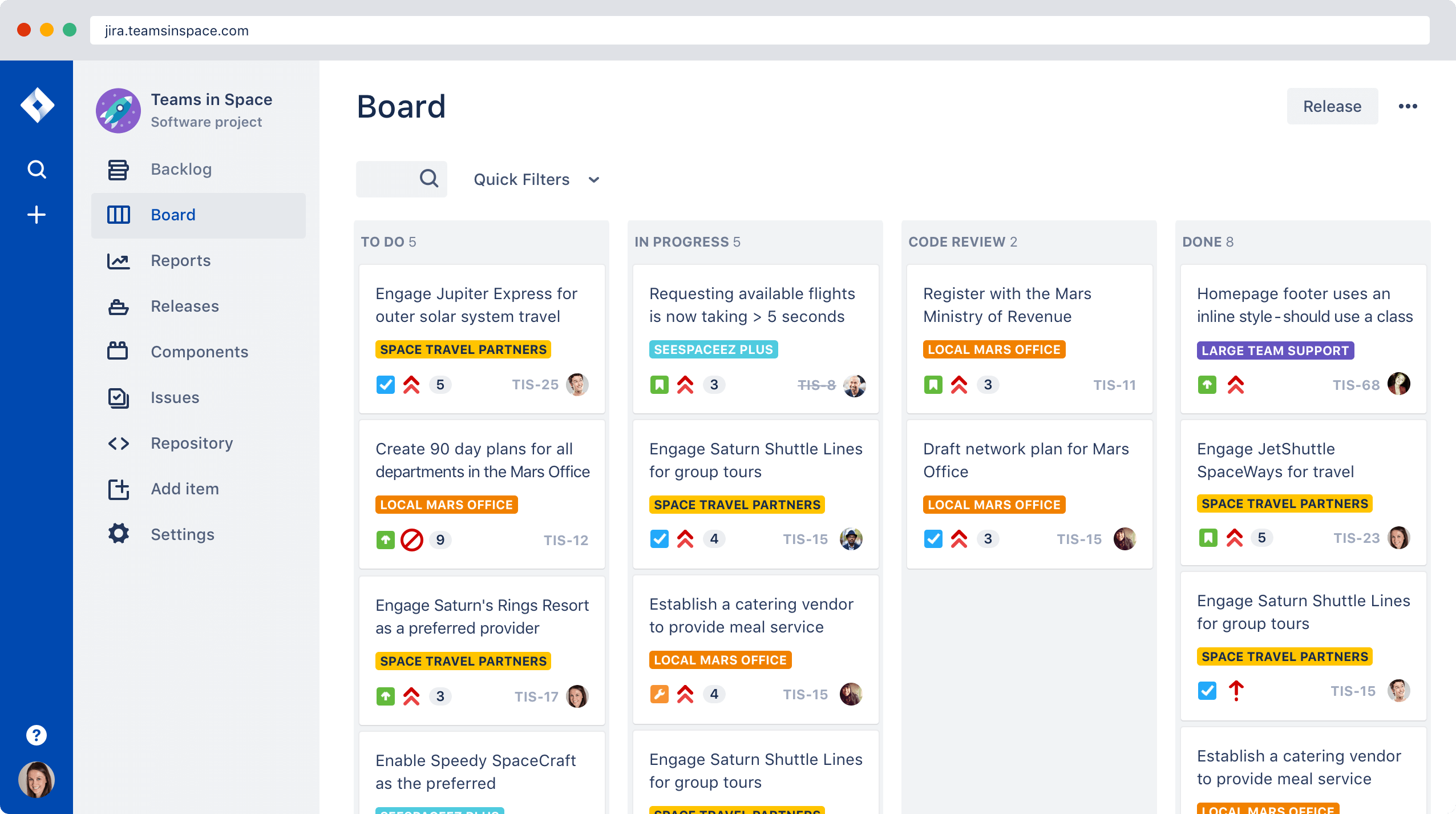
Jira allows you to build a backlog, organize it, create sprint, kanban board, and manager a lot of other features related to Project Management. I use it currently on a lot of projects in a Scrum organization, and it became a must have to manage all the Scrum Events.
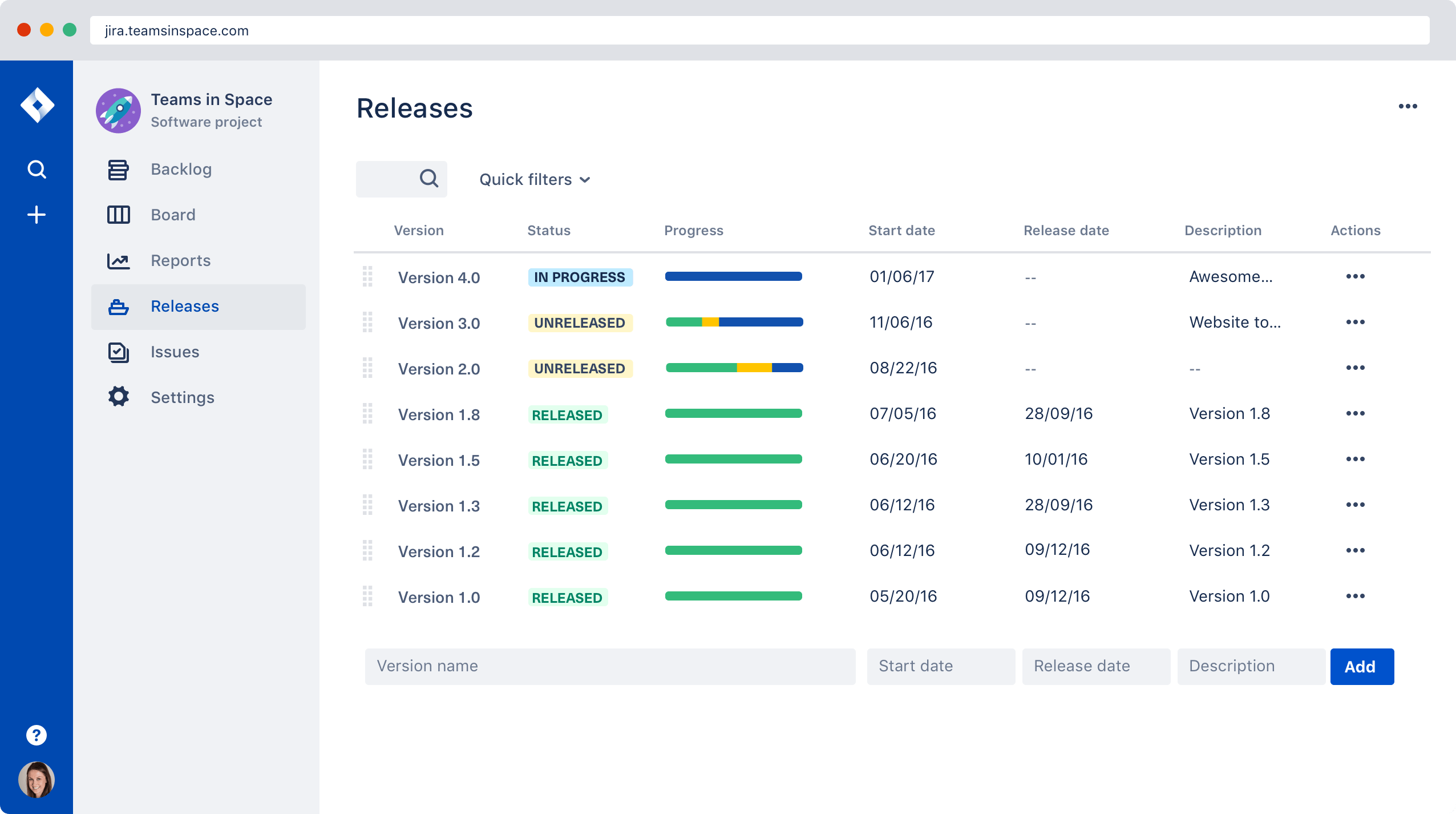
You can ogarnize your backlog for existing or in development projects, dealing with bug tracking, issues, or features by tagging tasks differently. You can even create different kind of board with the same tasks to optimize the presentation depending on the team consulting it.
Confluence is here to help you document your project. We use it to document design decisions as well as business and technical decisions. It’s kind of a do-what-you-want-with-it tool: a blank page that only need to be filled in.
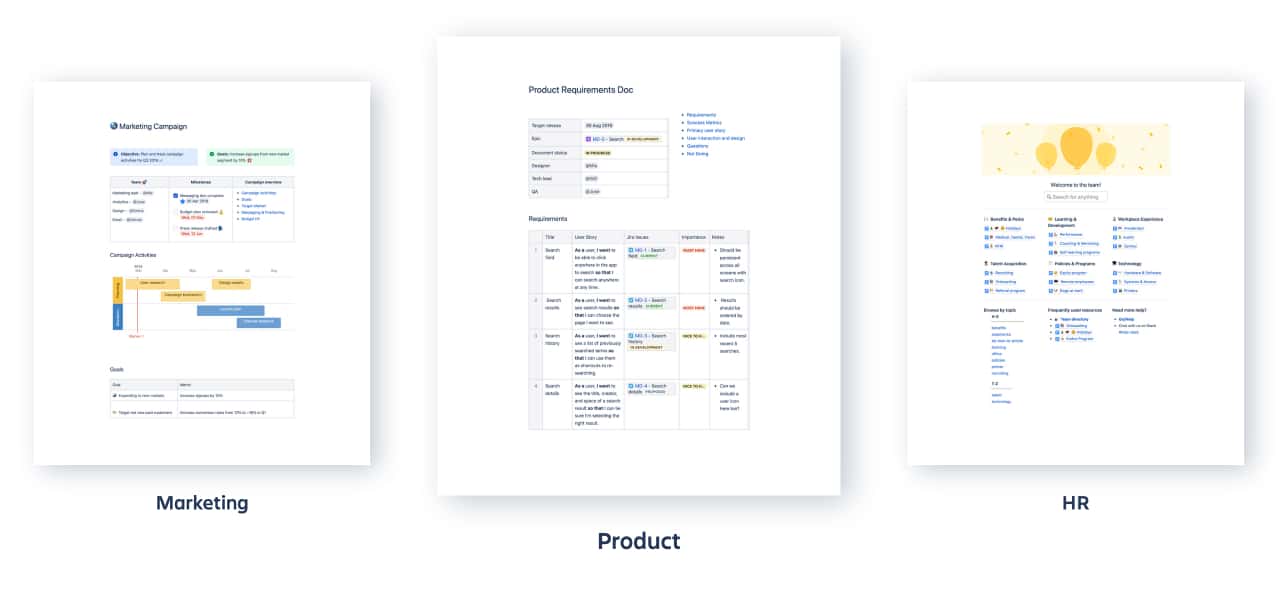
Possibilities are infinite, so I’ll let you decover the tools further more.
PS. I admit I already use Confluence also to transfer files above 10 Mb to myself to avoid size limitation by email. Heh 🙄
More about Jira More about Confluence
Building Userflow and Mind Mapping
I found a lot of self hosted tools, but all of them were outdated for a long time. I decided to remove this section. Instead, I invite you to read the Stéphanie’s blog post on the same topic: Local and self hosted tools for Banking, Insurance and other institutions. She talks about Xmind, Powerpoint, and other solutions for Card Sorting for example.
SSO SAML and other solutions
I didn’t go through all the solutions because I don’t know your environment, but perhaps you know some tools that could be useful and self-hostable! Share with us in the comment 🙂
And for this kind of company obsessed with the security or the one looking for simple solution to log the employees to the tool they are supposed to use, a lot of well known solution are able to offer SSO SAML option, like:
- Miro: if you look for a tool that helps you organize your thoughs, your architecture, organize distant workshops with a lot of people collaborating on the same whiteboard with virtual sticky notes. That one is for you.
- Figma: if you need to design stuff, create interactive and animated prototypes, or high definition mockups, this tool is definitely made for you.
If the tool you usually use is not accepted for security or cloud reasons, like it is, often, always take a look at SSO SAML option for this tool, or simply “[Your tool] self-hosted” in a search engine, most of the time their is a solution for you.
Alternativeto.net is also a great tool to find solutions.
Icon of featured image named
“hosting” by Maxim Basinski from the Noun Project.


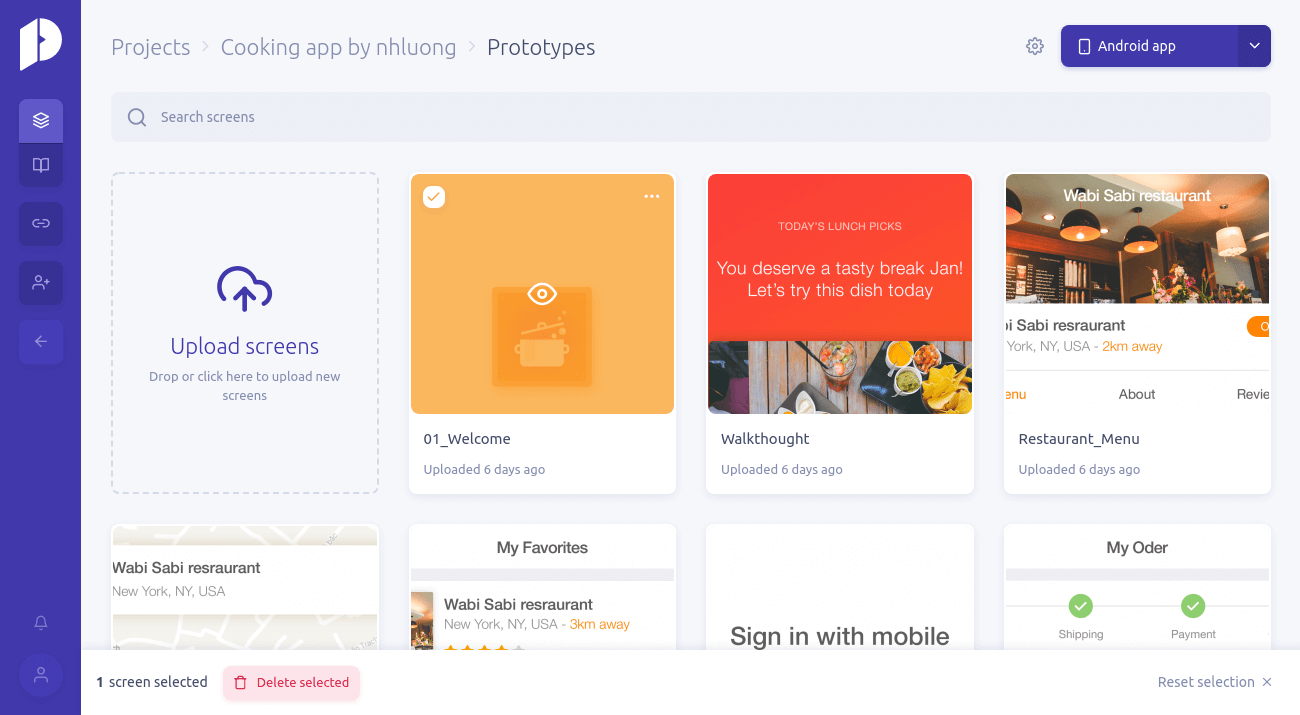
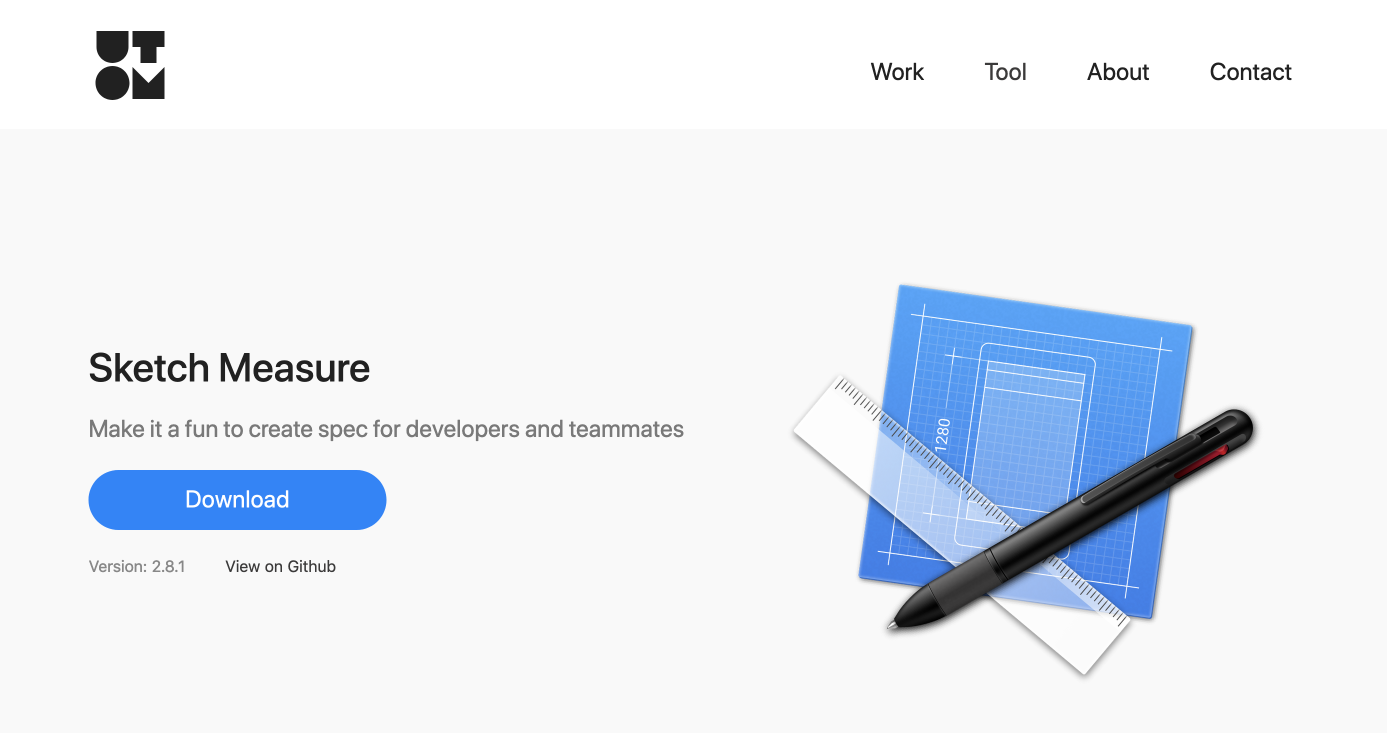
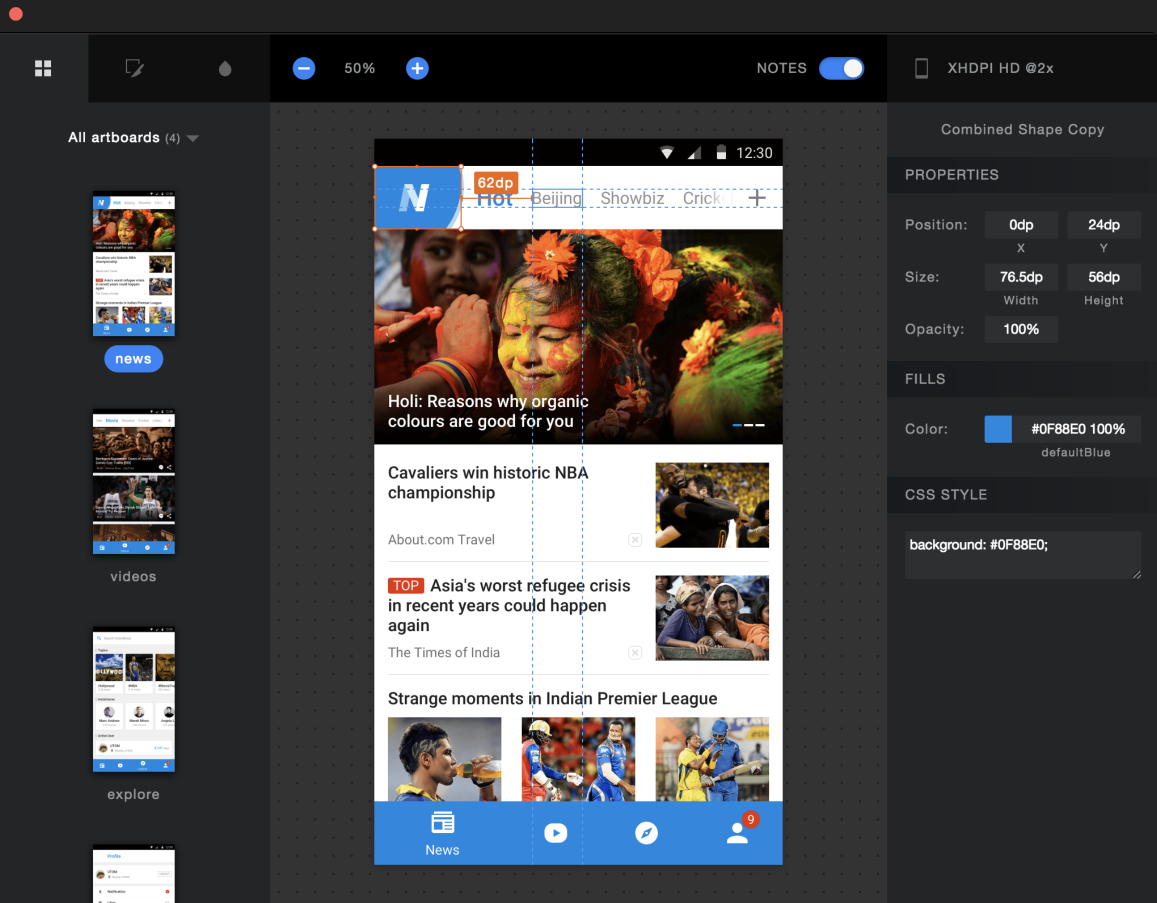
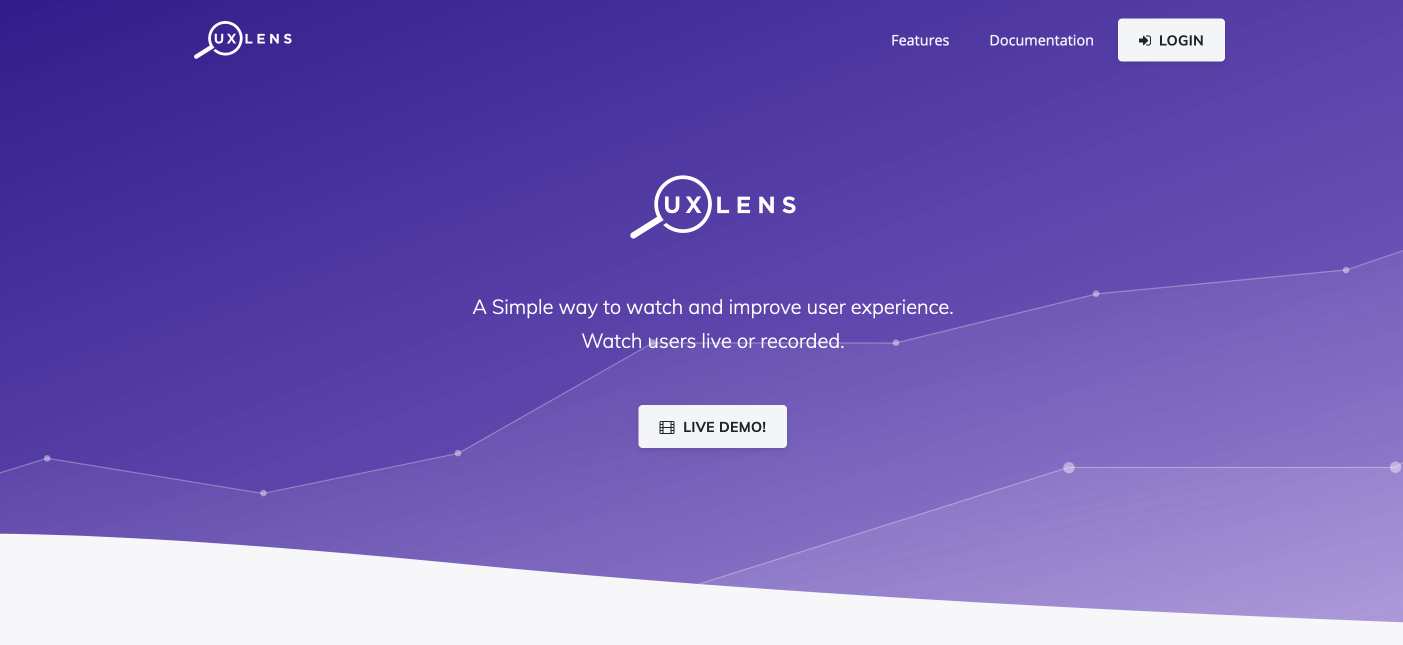


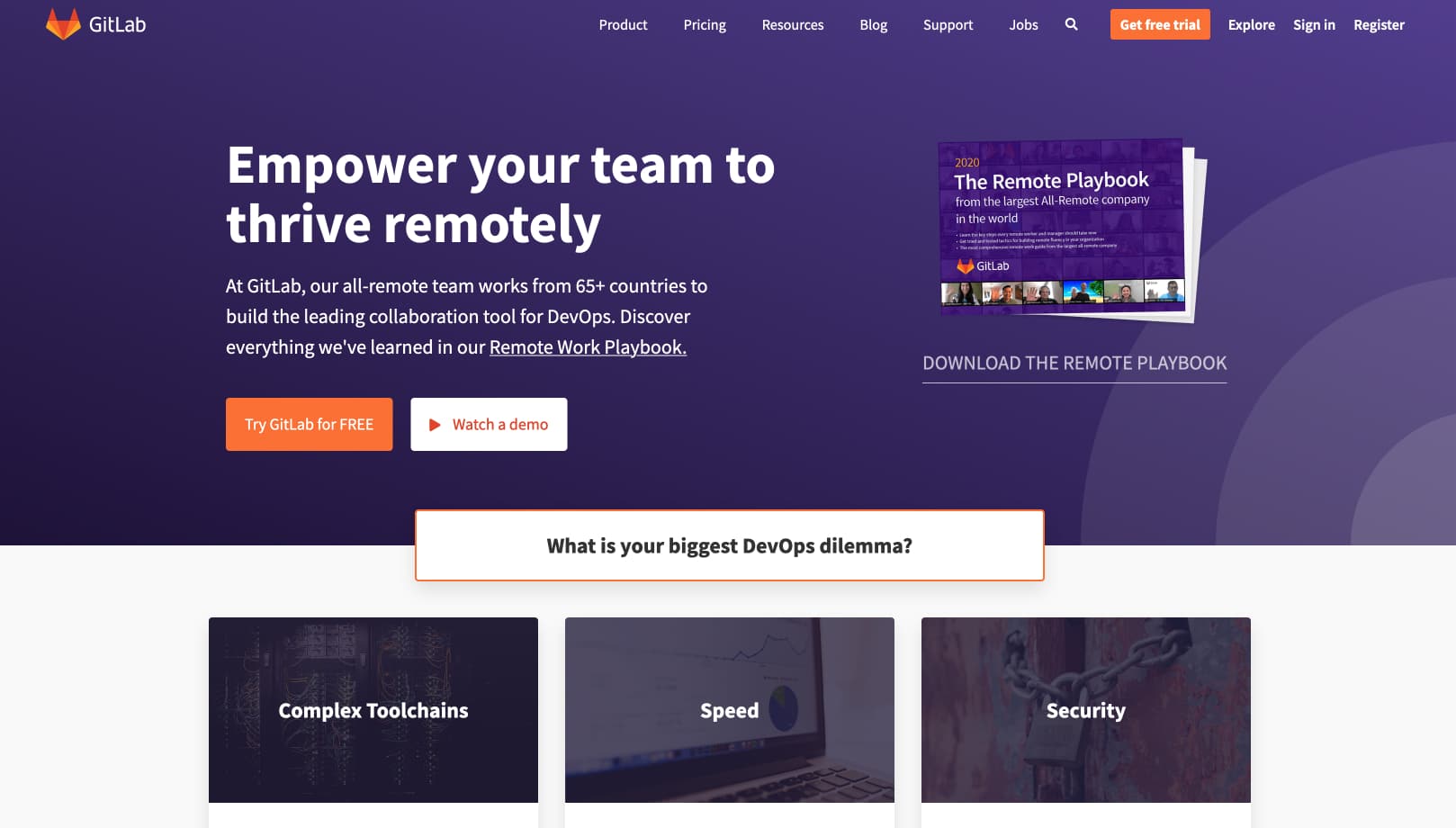





Post a comment for this article?
Follow comments and trackbacks